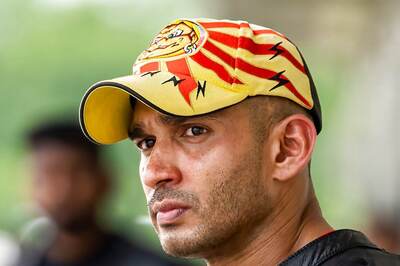
views
New Delhi: For 15 days in January 2017 and 15 more in July, government doctors in 100 districts across India went door to door looking for tuberculosis patients. They found a total of 15,000 people affected by one of India’s most lethal infectious diseases, who would have, otherwise, been lost to the system. These first two phases of active TB case-finding have made some dent in India’s TB mortality, as seen in the latest global WHO TB report.
Released earlier this week, the report showed that TB deaths in India fell from 4.8 lakh to 4.2 lakh. Being the bearer of most TB deaths in the world, even marginal progress counts for India, as its numbers can tip global numbers either way. This reduction, said Dr. Sunil Khaparde, the Deputy Director General of India’s TB programme, was because of “early diagnosis and treatment”.
In the alarming 2016 TB report, a hitherto unknown number of TB cases were brought to light, bumping up India’s mortality to 28 lakh. A worried government chalked out an active case finding plan, as Dr. Khaparde had told News18 then. The Centre drew up a list of 100 high-risk districts and went looking for patients instead of waiting for them to show up at healthcare facilities.
The third phase of this plan will happen in December 2017 in 186 districts. Officials will now take higher end diagnostic tools, such as Gene Xpert machines — a more advanced and efficient way to diagnose TB — and X-ray machines to the people they’re looking for. “Every round gets more intensive,” said Khaparde. “In January, we found 3,000 cases in 15 districts. In July, with some diagnostic tools, we found around almost 13,000 more.”
Making available the Gene Xpert machines and providing nutrition supplements to TB patients are some interventions that have worked for India, said Khaparde. Not only did cases get caught sooner and more accurately than by the traditional sputum tests, they adhere to the two year treatment course.
“Providing nutrition to especially MDR [multi drug resistant] patients helps, as that’s where we have only a 50 percent success rate,” said Khaparde. As the report noted, India has 84,000 cases of MDR-TB and 21 percent of global deaths due to the drug resistant disease are here.
The number of cases reported went up from 17 lakh to 19 lakh, which meant that previously unnoticed patients were finally accessing healthcare and that the private sector was notifying more of its patients. This is crucial as Khaparde pointed out over 50 percent of India’s patients are in the private sector, which often does not adhere to government set treatment standards. “Also,” he added, “our healthcare seeking behaviour is very low”.
The missing numbers unearthed by the 2016 report were largely in the private sector.
The National Strategic Plan to eliminate TB focuses heavily on roping in the private sector, so as to accomplish is highly ambitious task of ridding India of TB by 2025, five years ahead of the international targets.
“About 15 percent of the 19 lakh notified case have come from the private sector,” said Khaparde. Though the progress is slow, this is where the increment in numbers has to come from. The government sector, the director pointed out, was “saturated”.
“We’ve rolled out providing free drugs and diagnostics to private sector patients, and we’ve proposed giving incentives to healthcare providers and to patients to stay on the treatment course. The union health ministry is waiting on financial sanction for these proposals. Khaparde also spoke about involving NGOs, pharmacies and doctors to ensure the delivery of the free drugs and diagnostics. “These are some of the ways we’re engaging this sector,” said Khaparde. The Indian Medical Association will also be involved to “sensitise” the private doctors their network can tap into.

















Comments
0 comment